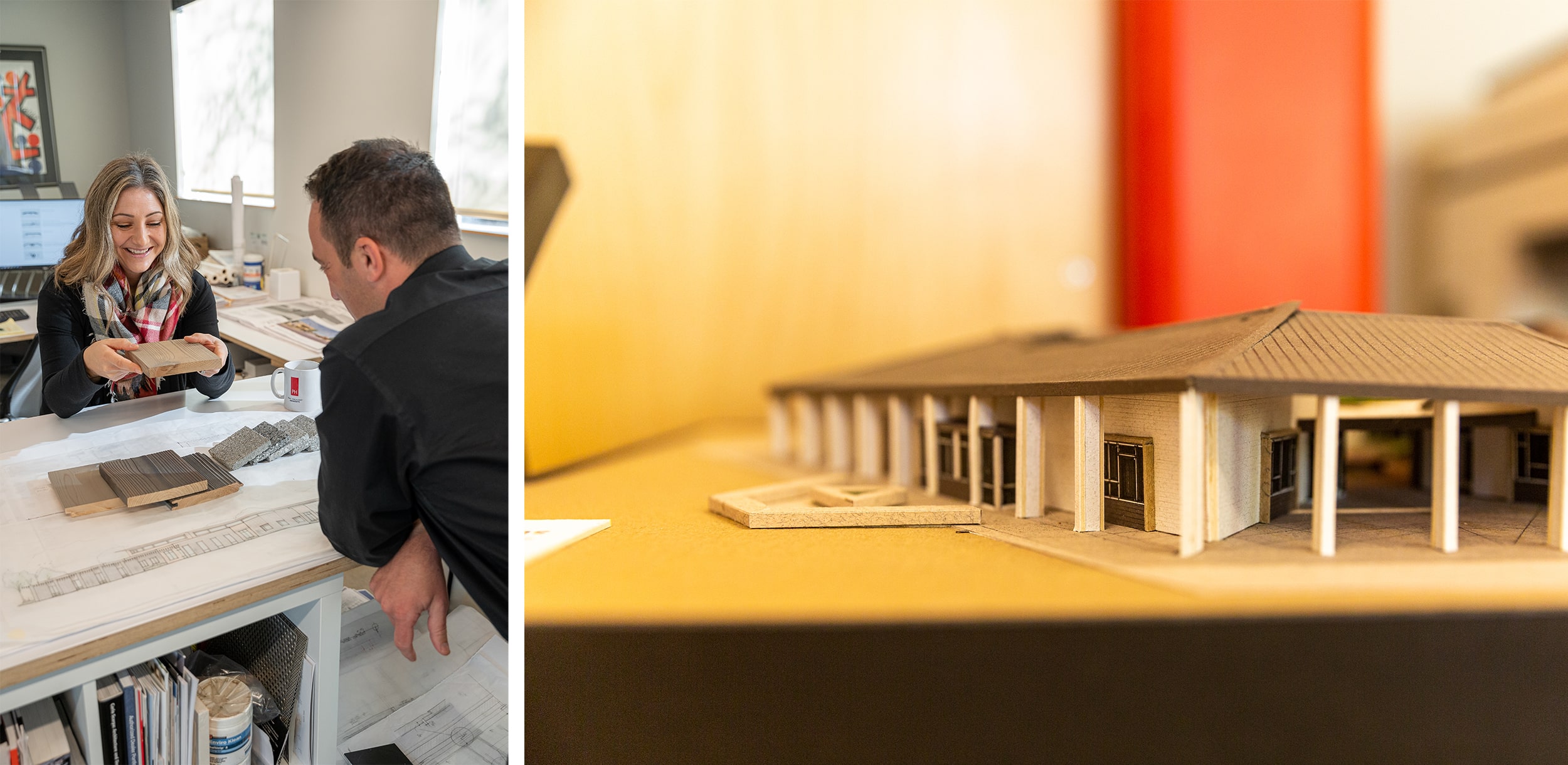Is Architecture STEM?

Architecture is a unique discipline that not many people know much about—neither do they understand the value that architects bring to our communities. As architecture evolves along with other technical or artistic disciplines, it’s important to recognize the field for its impact on the educational system and as a career path. This recognition can make the profession more accessible to groups that have not historically been involved in architecture. A great way to accomplish this is to acknowledge that architecture is, in fact, a STEM (Science, Technology, Engineering, and Mathematics) field. As schools in the United States encourage students to pursue STEM disciplines, architecture is its own unique combination of these fields.

How Is Architecture STEM?
STEM is, by nature, already woven into architecture.
Science
Having an understanding of local climate and how the sun moves during the seasons is the most basic concept of climate study and site analysis, but it has the most power in designing a good building. This simple consideration is understood and used by architects to design spaces that are comfortable and enjoyable to be in, all throughout the year.
Technology
Technology is a key part of how and why architecture can be considered a STEM discipline. During the design process, powerful software applications are used alongside hand drawings these days. Architects must balance the benefits that technology offers—such as efficiency, productivity, and organization—while not letting the software dictate how we work through a design problem. Sketching, reading, and referencing design books can be helpful antidotes to an inundation of advanced technology. Additionally, technology is embedded into the design of buildings through smart home systems, sustainability advances, and even the use of virtual reality.
Engineering
Engineers and architects must work together to ensure that structural and aesthetic goals are met while maintaining safety and functionality. Together, they design buildings with appropriate support spaces and efficient layouts for selected structural systems. They both also provide appropriate electrical and mechanical systems to serve specific constraints.
It’s never a black-and-white process but rather a collective merging of design ideas and construction techniques while maintaining the design intent, character, and function we’ve had from the beginning.
Math
Math is also an essential element of architecture. When someone says, “250 square feet with a nine-foot ceiling,” an architect can immediately picture how that looks and feels. Architects are mathematically aware of the built and natural environment—how area and volume feel and how to manipulate them to create the desired effect.
Architecture Just Isn't STEM, It's STEAM!
Architecture can also be considered STEAM because this more recent innovation of STEM adds “Arts,” which is a uniquely human and fundamental component of architecture.
Anyone can create a structure using science, technology, engineering, and math. However, adding “art” defines an architect’s role in creating beautiful, welcoming, functional spaces for a building’s inhabitants to thrive. A delicate balance of art and science is required for architecture. As much enjoyment designing without restrictions could bring, adding constraints such as site boundaries, context, and structural and mechanical systems presents a unique element to each project that requires a creative approach.
Preparing students with techniques found in architecture allows them to develop a healthy balance of both the more technical and the more creative sides of the brain, setting them up for success in whatever direction they choose for their life and career.
Learning How to Become a STEAM Architect
Architecture combines the careful consideration of the built and natural environment, along with the creation of an added element that respects and honors the environment. is a careful consideration of the built and natural environment, and the creation of an added element that respects and honors that environment. Learning how to become an architect requires a curiosity about design—how things look, how things are made, and how things can be used. Creating a building that is unique to its physical and cultural context and conveys emotion while solving problems is a most gratifying feeling.
Check out our guide to becoming an architect in California for more information on how to get started in a design career.

How Has Architecture Already Been Recognized as a STEM Field?
Congress passed a bill on July 31, 2018, officially designating architecture as a STEM field. This bill is a great step in the right direction—making architecture more accessible to young minds. New ideas help educate our world about what we do and why.
Architecture integrates principles of STEM, plus a distinctly human aspect. Adding architecture to STEM curricula builds upon what’s already being taught and adds a human element to a more logical, traditionally left-brained set of interests. Integrating architecture into education is critical. In our hyper media-focused world, students want that tactile experience—creating, understanding, problem-solving, and building.
Architecture Is a Good STEM or STEAM Field for Students to Pursue
Even if students exposed to architecture and design principles choose a different career path, a STEM/STEAM-focused curriculum encourages a wide range of skill development. This training lends itself well to many different careers, ranging from video game design, software development, teaching, or traditional office jobs to becoming a practicing architect. Here are some reasons why architecture is a good STEM/STEAM field for students to pursue:
Architecture Is Exciting and Appeals to Young Minds
Teaching young children and students to be aware of their built environment can contribute to overall well-being and self-awareness. For example, teaching students to observe how light comes into a space or how to identify what is comfortable and uncomfortable adds tremendous value to how you understand the world around you.

Architecture Encourages Excellent Communication Skills
If there’s anything to be learned in life, it’s that communication is essential. In working with others, managing a project, or presenting a design idea, students have the opportunity to develop effective communication skills that can benefit them in many aspects of life.
Architecture Is a Service to the Community
Architecture is ultimately a service that helps people create spaces that improve the community. This desire to help the community can begin and be acted upon even before pursuing technical education. Helping non-profits paint, doing basic repairs, yard work, and gardening for neighbors and friends is a great place to start. In addition, getting involved in the community is a great place to start.
Natural Beauty and the Built Environment
Teaching kids to look around and see beauty in nature is important. Awareness of the built environment is the first step to nudging that desire to change the environment or create something different for the better.
What STEM Skills Are Needed for a Career in Architecture?
Some of the crucial STEM skills that apply to a career in architecture include:
Science
Curiosity about the built environment is essential. What exists? Is it good, bad, or something in between? How can a building complement and protect the natural environment?
Critical Thinking
Critical thinking is essential to architecture. Architects must think about:
- How occupants will use a space
- How to communicate an idea
- How to create a work plan
- How to manage a team
- How to be a good steward of the client’s given budget and goals
A lot of confidence as an architect comes from experience and being able to pursue an idea against the challenge of shifting goals and requirements. For example, the architect might be asked for something that significantly affects the project, or maybe the budget is reduced mid-way through the project.
If a building is designed with efficient, integrated beauty, it is easier to stay true to the essential design ideas as the course shifts.
Growth Mindset
A growth mindset is necessary for architects. Embracing an attitude of constant learning and always “being a student,” is part of the recipe for success. A good architect is not afraid to ask questions, is humble, and is willing to change his or her mind as new information becomes available.
Identifying Architecture as STEM Is Good for Diverse Representation
Identifying architecture as a STEM field is a crucial step in promoting greater diversity in the field. While architecture combines artistic and creative skills with technical knowledge and problem-solving, it is often not seen as a traditional STEM field when presented to students.
By recognizing architecture as part of STEM, young women, for example, are encouraged to pursue careers in the field. This is a vital effort for architecture as female representation in this discipline, and STEM in general, has been historically low.
Girls who are interested in STEM often face obstacles due to cultural and social norms that associate these fields with masculinity. Architecture, in particular, has long been a male-dominated field but is heading in a more inclusive and representative direction. Identifying architecture as a STEM field can further help to eliminate this stigma and make it even more appealing to girls and young women who are interested in pursuing a career in architecture.
Studies have shown that diverse teams tend to be more innovative and creative and that having women in leadership positions can have a positive impact on company culture and decision-making. Increasing the number of women in architecture and STEM can lead to more innovative and diverse solutions for design and construction projects.
Successful Women in the History of Architecture and Construction
Not often discussed are the significant contributions that women have made to the architecture and construction disciplines. For example, Julia Morgan, often known as California’s first woman architect, handled long-term projects like Hearst Castle on the California Central Coast with ease, serving as a significant source of inspiration to female architects who work on projects with long timelines and changing demands.
Erin Napier, from the HGTV show “Home Town,” shows a unique care and human aspect to architecture and design in a different way than many “Star-chitects.” She often deals with tight budgets, small homes, and the need to make tough decisions. Napier also does an excellent job of respecting and honoring the character of a project as it exists, which is a great characteristic to have in a designer.
Women’s contributions to architecture recently extend to children’s book authors like Mollie Elkman, who wrote “The House That She Built,” which teaches young girls about jobs in construction by painting a scenario in which the entire house is built with only women’s labor. There’s also Amanda Jewell, who wrote “Panda the Project Manager Builds Her First Home.” It is exciting to see women investing in making architecture, design, and construction accessible to young kids.
The Role of Mentors in Encouraging Girls in Architecture and STEM
Mentors play critical roles in encouraging girls in architecture and STEM. Experienced female architects, such as our very own Senior Associate Jamie Steinmetz, are role models and inspirational figures for up-and-coming female architects.
These mentors inspire passion for each project, confidence in dealing with challenges that inevitably arise, and balance in being a working wife and mother. By modeling it themselves, they encourage young professionals to obtain their licenses as soon as possible after starting work. Having female mentors in high schools and architecture schools encourages girls and women to be self-thinkers, problem-solvers, and creative, talented adults.
A Unique Blend of STEM, Art, and Opportunity
With the elements of science, technology, engineering, art, and math, architecture requires a balance of left and right-brained thinking to create beautiful, functional, and efficient buildings. Introducing architecture and design principles to children and students helps to develop all-encompassing skills that can be beneficial to a variety of career paths.
Integration of architecture in STEM education encourages women to join architecture and other STEM careers, leading to a more diverse and thriving industry.
Learn more about how architecture combines art and STEM (STEAM) from the experts by following our social media on Facebook, Instagram, and LinkedIn.

